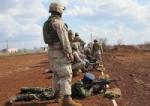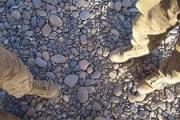> Sporadic ineffective fire...the enemy is engaging the unit every few minutes with a few bursts or single shots. The effects of the fire are not deterring the unit from maneuvering or returning fire. The fact that it is ineffective can help determine whether the enemy is trying to bait the ground force into an ambush; wants to see their tactics, techniques, and procedures; or is just harassing the unit. The ineffective fire also shows the level of marksmanship of the enemy and may help determine their range.
> Sporadic effective fire...the enemy is engaging with a purpose, from closer range, or is a skilled marksman. On numerous occasions in Marjah, the enemy would engage an element in a compound every few minutes with a single accurate shot or burst. Effective fire means it is affecting the elementís ability to maneuver or return fire.
> Sustained ineffective fire. This type of fire will mostly come from inexperienced fighters who are not aiming but rather making noise with their weapons. The sustained rate of ineffective fire shows the enemy elementís lack of fire discipline, ineffective range at which they are trying to engage a unit, or lack of training.
> Sustained effective fire. Effective fire of any kind halts a unitís ability to maneuver and return fire freely. When that fire is sustained, the ground commander and COC need to begin to utilize supporting arms internally to the ground element or externally utilizing 81mm mortars, close air support, or artillery. As Marines we can never become fixed by the enemy and allow them the ability to maneuver on us and control the pace of the firefight...an element taking sustained effective fire should initiate some type of support.










Bookmarks